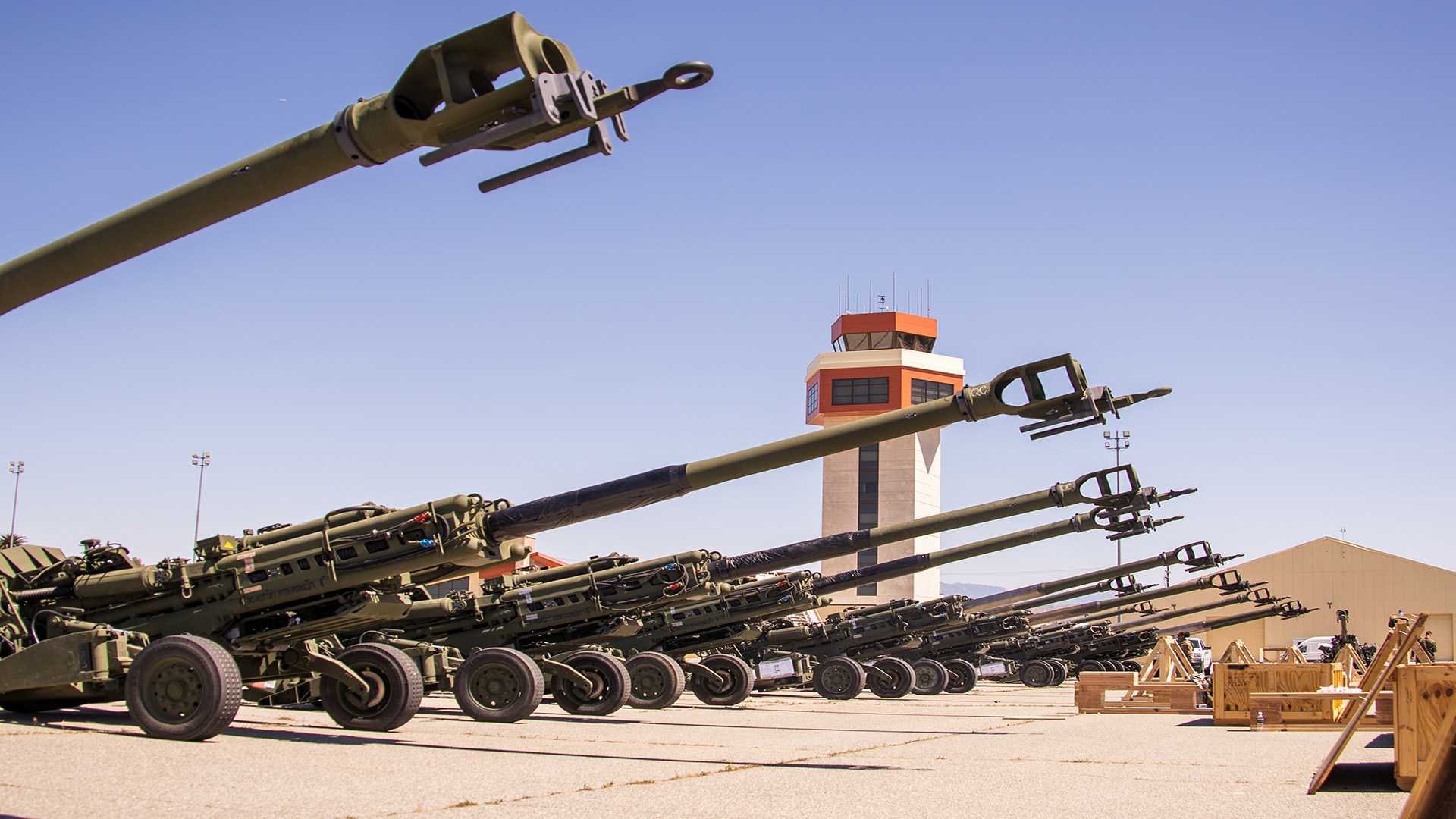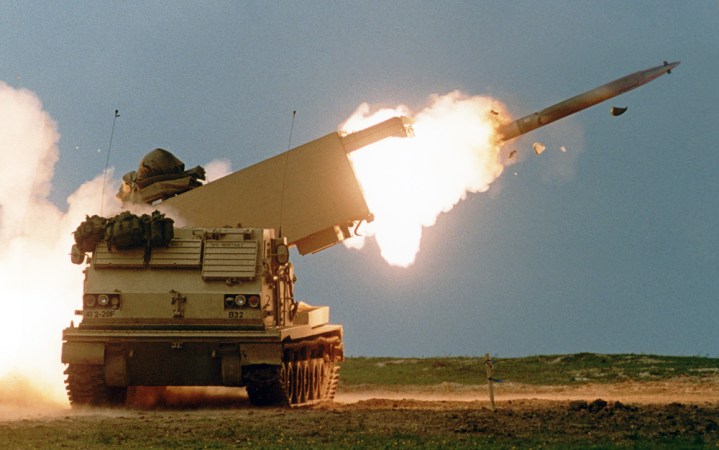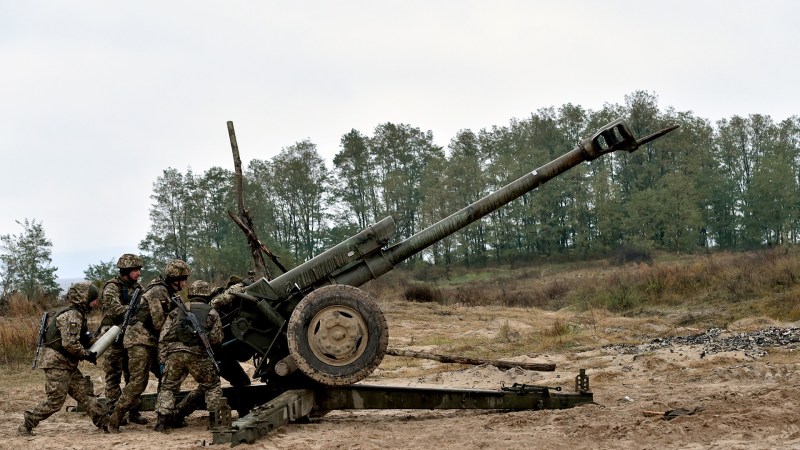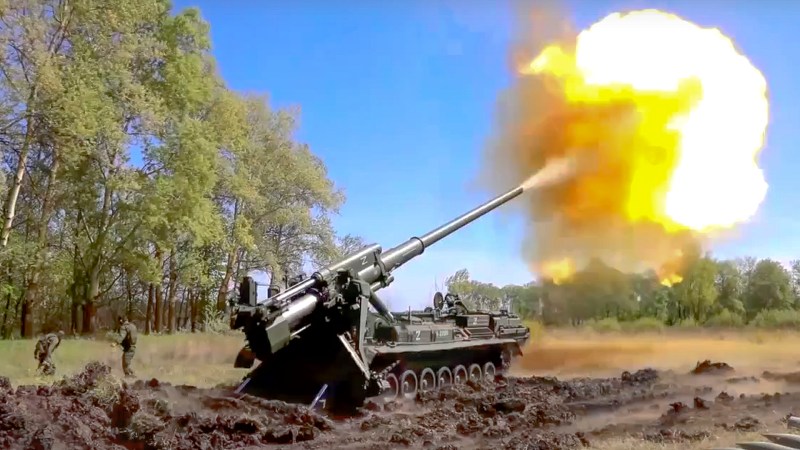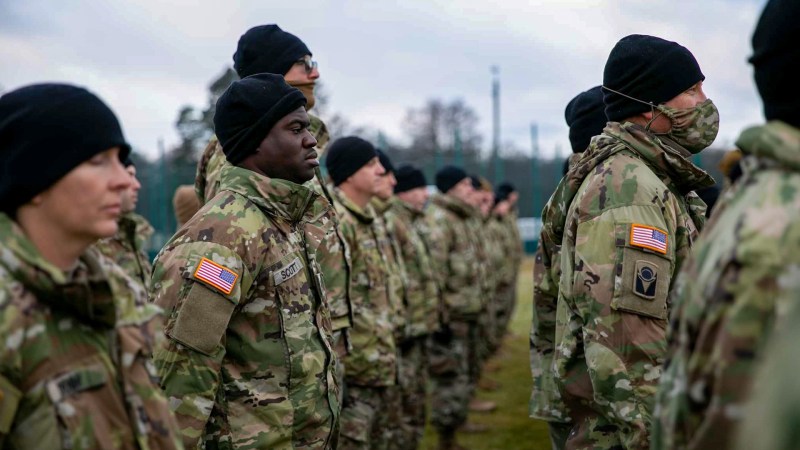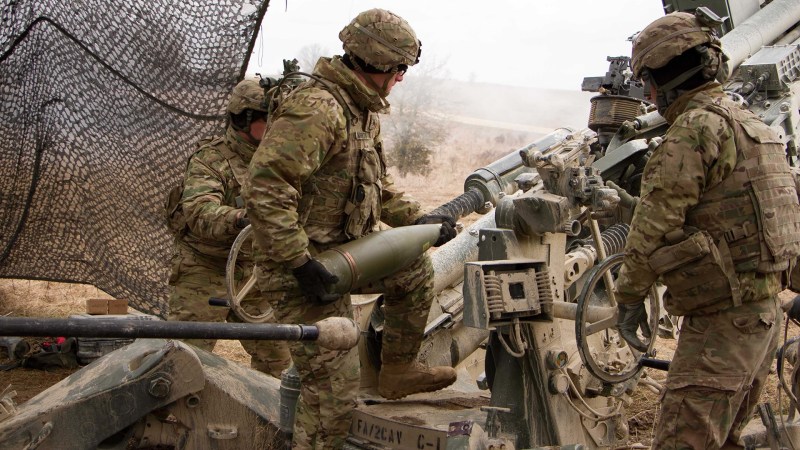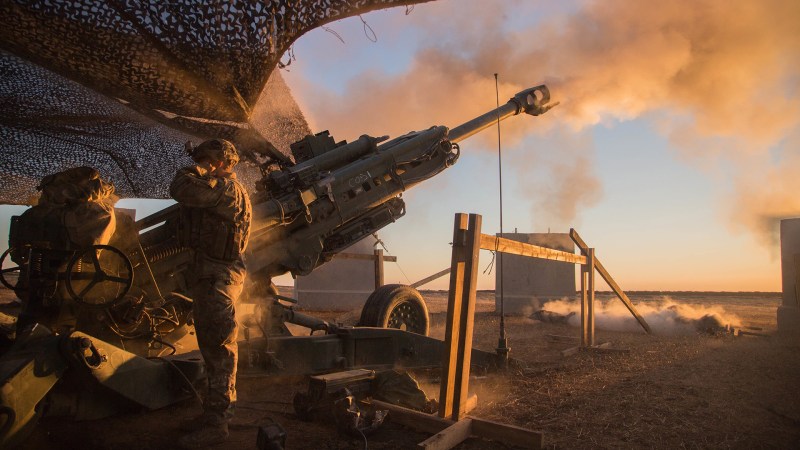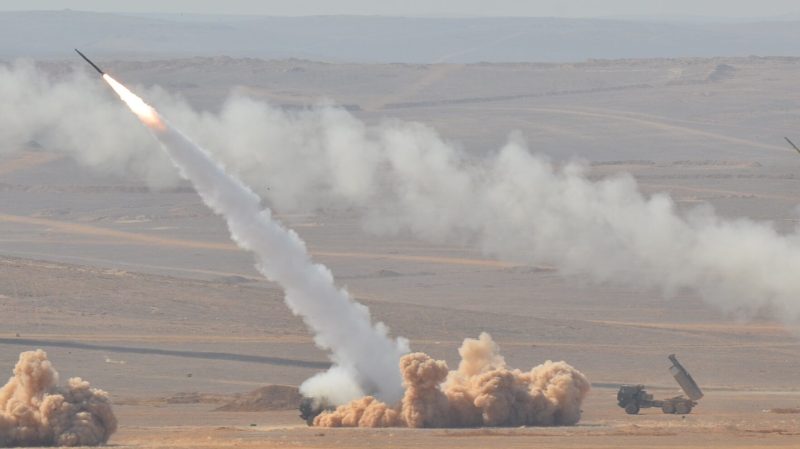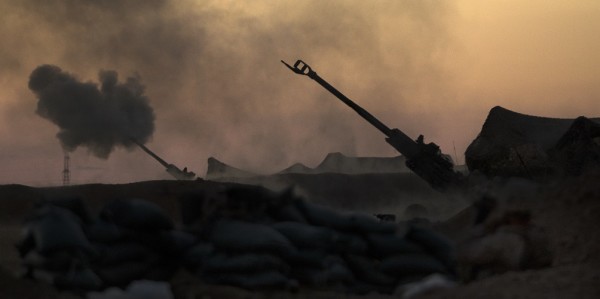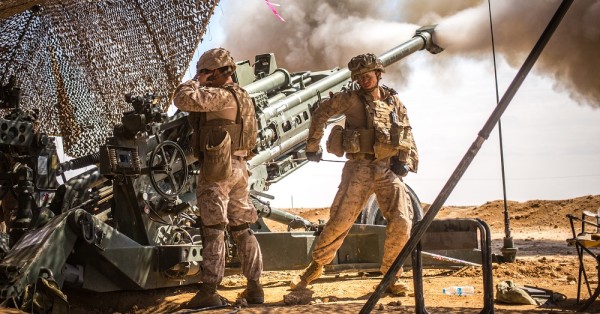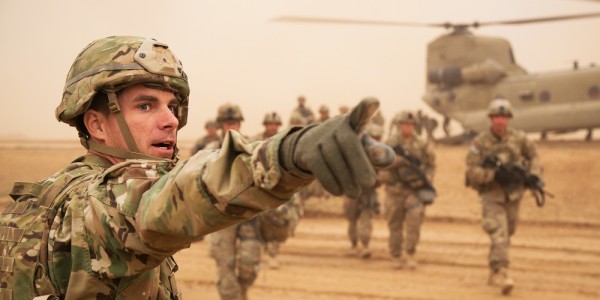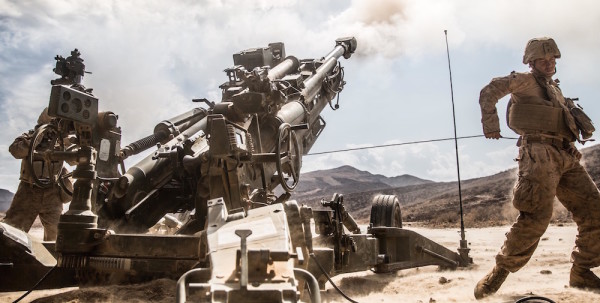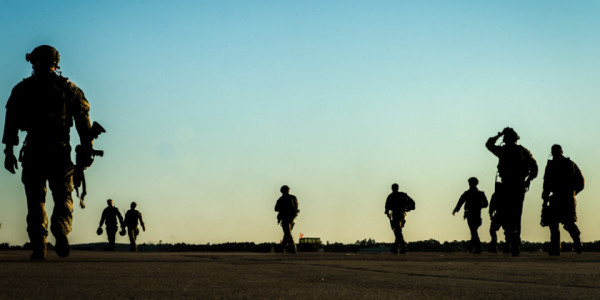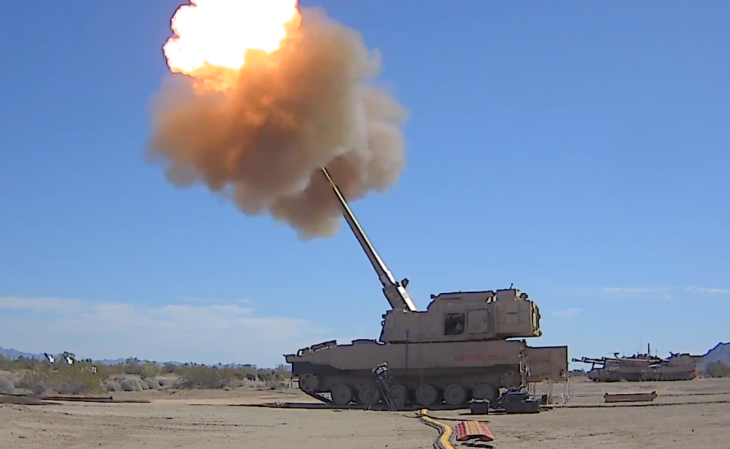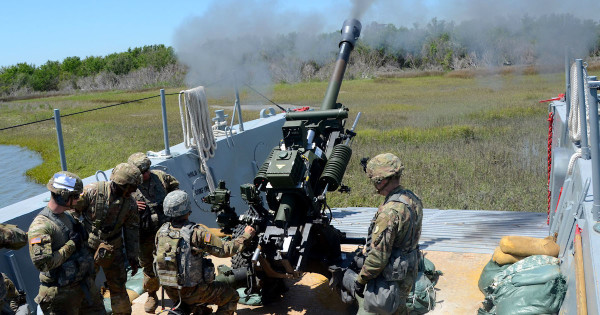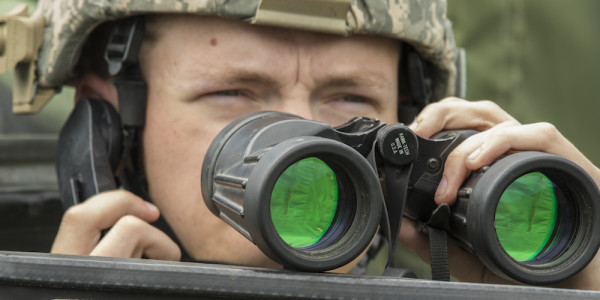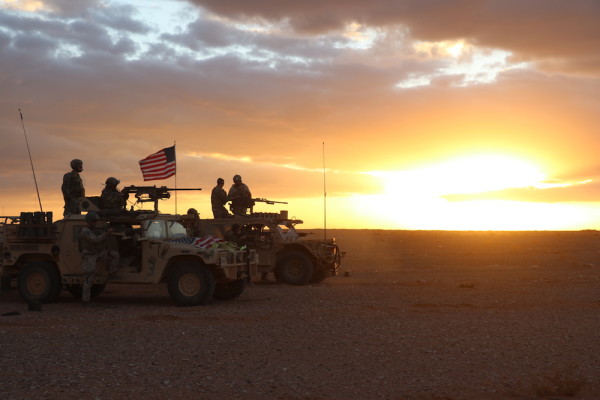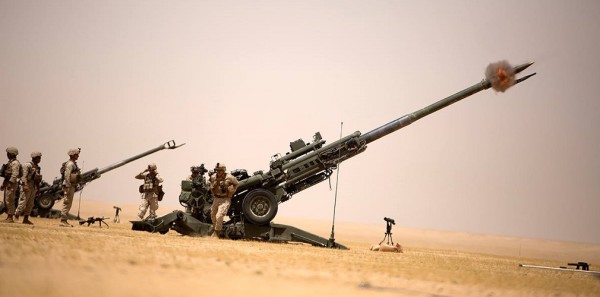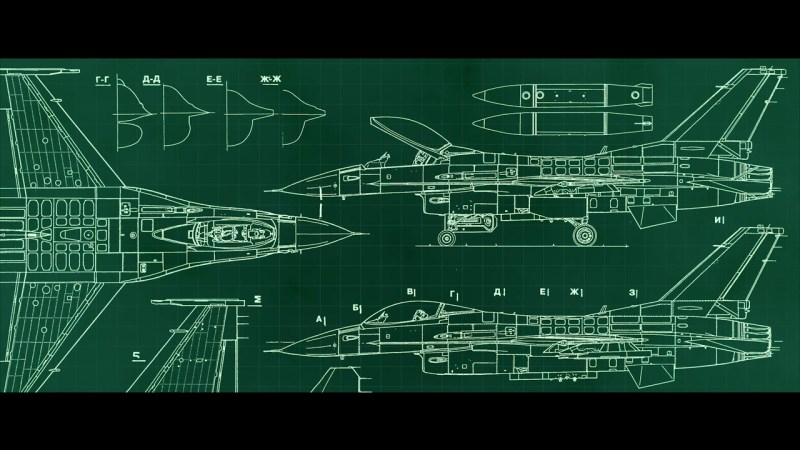The 90 M777 howitzers that the United States is providing to Ukraine will not only make it more difficult for the Russians to move out in the open but the guns could also support a future Ukrainian offensive to reclaim Russian-occupied parts of their country, experts told Task & Purpose.
About 70 of the 155 mm guns along with roughly 70,000 artillery rounds have been transferred to Ukraine so far, a senior defense official told reporters on Monday. More than 200 Ukrainian troops are expected to be trained on how to operate the howitzers by the end of Monday with another 50 Ukrainian service members scheduled to begin training later this week.
The first Ukrainian artillerymen were trained by Canadian troops and other Ukrainians were taught how to operate the howitzers by Florida National Guardsmen, the senior defense official said at a Pentagon news briefing. Those guardsmen had been on a training mission inside Ukraine before the Russian invasion and now they are continuing their mission in Germany.
Subscribe to Task & Purpose Today. Get the latest in military news, entertainment, and gear in your inbox daily.
Even in this age of modern – and often over-engineered – weapons systems, artillery has proven its worth time and again on the battlefield. During the 2017 fight to drive the Islamic State group from its former capital of Raqqa, Syria, a Marine artillery detachment fired so many 155 mm rounds in support of Syrian Democratic Forces that they burned out the barrels of two of their M777 howitzers.

“The one thing on artillery is: We’ve always called it ‘the king of battle,’ back to Napoleonic times, just because there’s really no defense against it once it’s firing,” said Marine Col. James W. Frey, a senior military fellow at the Center for a New American Security think tank in Washington, D.C.
Another inherent advantage of artillery is that it can be fired in all weather conditions and at any time of day or night, Frey told Task & Purpose.
The howitzers will help Ukrainian forces hinder the Russian’s ability to maneuver, he said. Because it’s muddy in spring, the Russians are likely to stick to the roads when they move. Using drones and other forms of reconnaissance, the Ukrainians can constantly monitor those roads and strike with artillery when needed.
“The artillery just gives you a lot more options 24/7 without having to expose people within that distance,” Frey said.
Since the Ukrainians know their own territory better than the Russians, they can also design their defenses to channel Russian advances into kill zones, where the Russian forces could be destroyed by artillery, Frey said.
“There’s only so many lines of communication to go in and out for those roads – especially if you’re working heavier equipment and logistics that the Russians are depending on,” Frey said. “You could certainly knock that out because there’s only so many avenues of approach that they could use.

The Defense Department is also providing Ukrainian forces with 14 counter-artillery radars. Combined with those radars, which the Ukrainians have been receiving since 2015, the howitzers will allow Ukrainian forces to target and attack Russian tube and rocket artillery, said retired Army Lt. Gen. Ben Hodges, former commander of U.S. Army Europe.
“The radar intercepts incoming artillery and then your own guns can shoot back at where it came from quickly,” Hodges said. “This is an important part of the fight. And so, providing the Ukrainians additional artillery will enable them to destroy – or at least disrupt – the Russian artillery and rocket launchers that are causing the most damage against Ukrainians – but also against towns and cities.”
Artillery is generally used against targets in the open, such as air defense systems, logistics areas, and convoys of lightly armored vehicles, Hodges said. Other prime targets for artillery include command posts and headquarters.
“If you discover a division or combined arms army headquarters in a village or set up somewhere – that’s exactly what you would want to do, is hammer that with artillery,” Hodges said.
The Ukrainians claim they have already killed and wounded several Russian general officers by attacking enemy command posts, including Chief of the General Staff of the Armed Forces of the Russian Federation, General of the Army Valery Gerasimov. However, U.S. officials have not confirmed these claims.

As well as providing the Ukrainians with a strong defensive capability, the howitzers would also allow Ukrainian forces to switch to offense, Hodges said. “If there is a counterattack of any sort by the Ukrainians or a conventional counter-offensive, they will need the artillery to support their attack as well,” he said.
There are two ways the Ukrainians could use their new howitzers to go on the attack: They could fire massive barrages to blow holes through the Russian lines, or they could destroy Russian artillery ahead of the attack, said retired Army Col. Tom Davis, who led the 4th Battalion, 82nd Field Artillery Regiment in the 3rd Armored Division during the 1991 Gulf War.
Every time the Russians fire one of their own artillery pieces, they will have to pack up and move to avoid the Ukrainian counter fire, Davis told Task & Purpose. The Russians also tend to concentrate their artillery “hub-to-hub” while the U.S. military keeps artillery units spread out as a form of protection.
Ultimately, the Ukrainians should receive a total of 183,000 artillery rounds for their M777 howitzers, according to the Defense Department. To put that number into perspective, Davis said that his battalion fired fewer than 1,000 rounds during the Gulf War’s four-day ground campaign.
“If they’re getting 180,000 some-odd rounds, that should give them a pretty good capability to diminish and significantly degrade a lot of the Russian artillery,” Davis told Task & Purpose. “And if they can find the [Russian] logistics spots – if they can find the places where they’ve got their supply trains, where they’ve got the fuel trucks, where they’ve got their own intel command and control organizations – if they can find those places and can take them out, then they’re going to get a real significant advantage because, apparently, the Russians are really struggling with command and control as it is.”
The latest on Task & Purpose
- The Navy’s top enlisted sailor tried to lift the spirits of a beleaguered crew. He didn’t
- What this old Russian tank tells us about the invasion of Ukraine
- Navy’s top enlisted sailor tells crew dealing with string of deaths that his answers won’t ‘make you real happy’
- The Air Force is trusting the internet to name its ridiculous new cybersecurity mascot
- A military housing company kept committing fraud after pleading guilty to fraud, Senate report finds
Want to write for Task & Purpose? Click here. Or check out the latest stories on our homepage.

